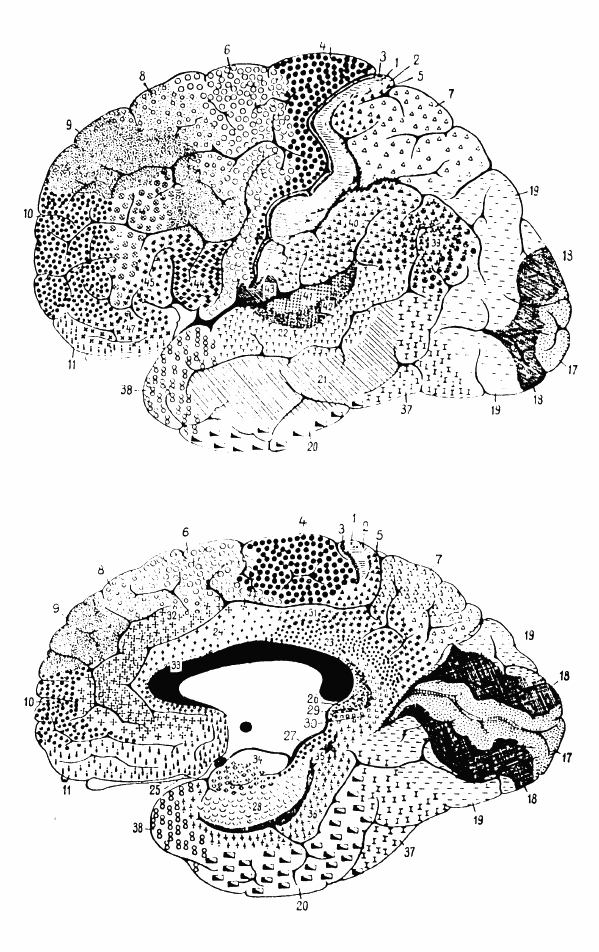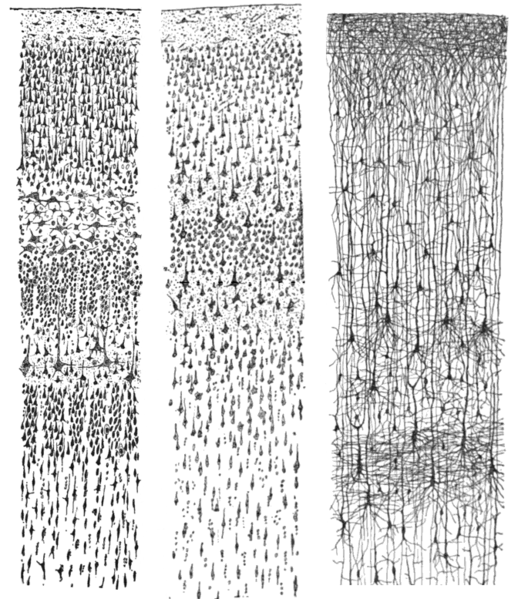Figure 1 –Dr Korbinian Brodmann, German Neurologist, Frontpiece of ‘Localisation in the Cerebral Cortex’, 1909, Public Domain*
Dr Korbinian Brodmann was a neuroanatomist who revolutionised the study of the brain by generating carefully constructed brain maps of humans (see Figure 2) and other species. In the process he compared the brains of these different species and identified specific regions according to their microscopic properties. Brodmann’s maps are still used by clinicians and neuroscientists serving as a testament to the validity of his research. The book was originally published in 1908 in German and has subsequently been translated into English (See Appendix).
Brodmann’s treatment of the human brain is essentially covered in 21 pages of the translated text with Brodmann systematically discussing the neuroanatomical features of the different regions along with the Brodmann Areas found within those regions. The fifth region that Brodmann describes is the Occipital region. Brodmann allocates three Brodmann Areas (BA) to this region
1. BA17 – The Striate Area
2. BA18 – The Occipital Area
3. BA19 – The Preoccipital Area
Figure 2 – Cytoarchitectonics of human brain according to Brodmann (1909), Public Domain*, The Top Diagram is the Lateral Surface of the Cortex, The Bottom Diagram is the Medial Surface
Figure 3 – Three drawings by Santiago Ramon y Cajal, taken from the book “Comparative study of the sensory areas of the human cortex”, pages 314, 361, and 363, Public Domain*
Left: Nissl-stained visual cortex Middle: Nissl-stained motor cortex Right: Golgi-stained cortex
The Occipital Region like many other regions of the brain has been intensively studied. Researchers have built up a very sophisticated understanding of the functioning of this region (e.g see here).
Turning first to the BA17 – the Calcarine Cortex, Brodmann says that it BA17’s visual appearance is distinct and visible even to the naked eye. The bulk of BA17 according to Brodmann’s description is found on the medial cortex. He begins by describing the relationship of BA17 to the Calcarine Sulcus. On the medial side it extends quite significantly and although covering an area which includes the Lingual and Calcarine Sulci he notes considerable interindividual variation. The dorsal Striate area is defined by the combining of the Parieto-Occipital and Calcarine Sulci where the dorsal Striate area follows the deeper parts of the sulcus. On the lateral aspect of the cortex, BA17 is described as extending minimally again with individual variation.
Next Brodmann provides a brief description of BA18 – the Occipital Area. According to Brodmann, this area forms a ring-like encirclement of the Striate Cortex. However medially it is sufficiently narrow to make identification difficult. On the lateral cortical surface it is wider and extends along the Lateral Occipital Sulcus (in brackets referred to as superior and presumably meaning superior to this sulcus).
Finally Brodmann describes BA19 – the Preoccipital Area. Brodmann’s description is similar to that of BA18. Again it surrounds BA18 in a ring-like formation. Again it is difficult to identify on the medial surface. Again it extends over a wide area on the lateral cortical surface.
Brodmann also discusses some subtle differences between his findings and those of neuroscientists A Campbell and Elliot Smith. In the text he also refers to his previous publications which elaborate on the neuroanatomical details above.
References
Brodmann’s Localisation in the Cerebral Cortex. 1909. Translated and Edited by Laurence J Garey. Springer. 2006.
*Public Domain in those countries where the Copyright term of the life of the author (Korbinian Brodmann 1868-1918) plus the additional country specific term has lapsed from Copyright at the time of writing
An index of the TAWOP site can be found here and here. The page contains links to all of the articles in the blog in chronological order. Twitter: You can follow ‘The Amazing World of Psychiatry’ Twitter by clicking on this link. Podcast: You can listen to this post on Odiogo by clicking on this link (there may be a small delay between publishing of the blog article and the availability of the podcast). It is available for a limited period. TAWOP Channel: You can follow the TAWOP Channel on YouTube by clicking on this link. Responses: If you have any comments, you can leave them below or alternatively e-mail justinmarley17@yahoo.co.uk. Disclaimer: The comments made here represent the opinions of the author and do not represent the profession or any body/organisation. The comments made here are not meant as a source of medical advice and those seeking medical advice are advised to consult with their own doctor. The author is not responsible for the contents of any external sites that are linked to in this blog.



[…] The Most Important 21 Pages In The Field of Neuroscience? Dr Korbinian Brodmann. The Man Who Mapped … […]
LikeLike
[…] The Most Important 21 Pages In The Field of Neuroscience? Dr Korbinian Brodmann. The Man Who Mapped … […]
LikeLike
[…] The Most Important 21 Pages In The Field of Neuroscience? Dr Korbinian Brodmann. The Man Who Mapped … […]
LikeLike
[…] The Most Important 21 Pages In The Field of Neuroscience? Dr Korbinian Brodmann. The Man Who Mapped … […]
LikeLike
[…] The Most Important 21 Pages In The Field of Neuroscience? Dr Korbinian Brodmann. The Man Who Mapped … […]
LikeLike
[…] The Most Important 21 Pages in the Field of Neuroscience: Dr. Korbinian Brodmann – Part 6 […]
LikeLike